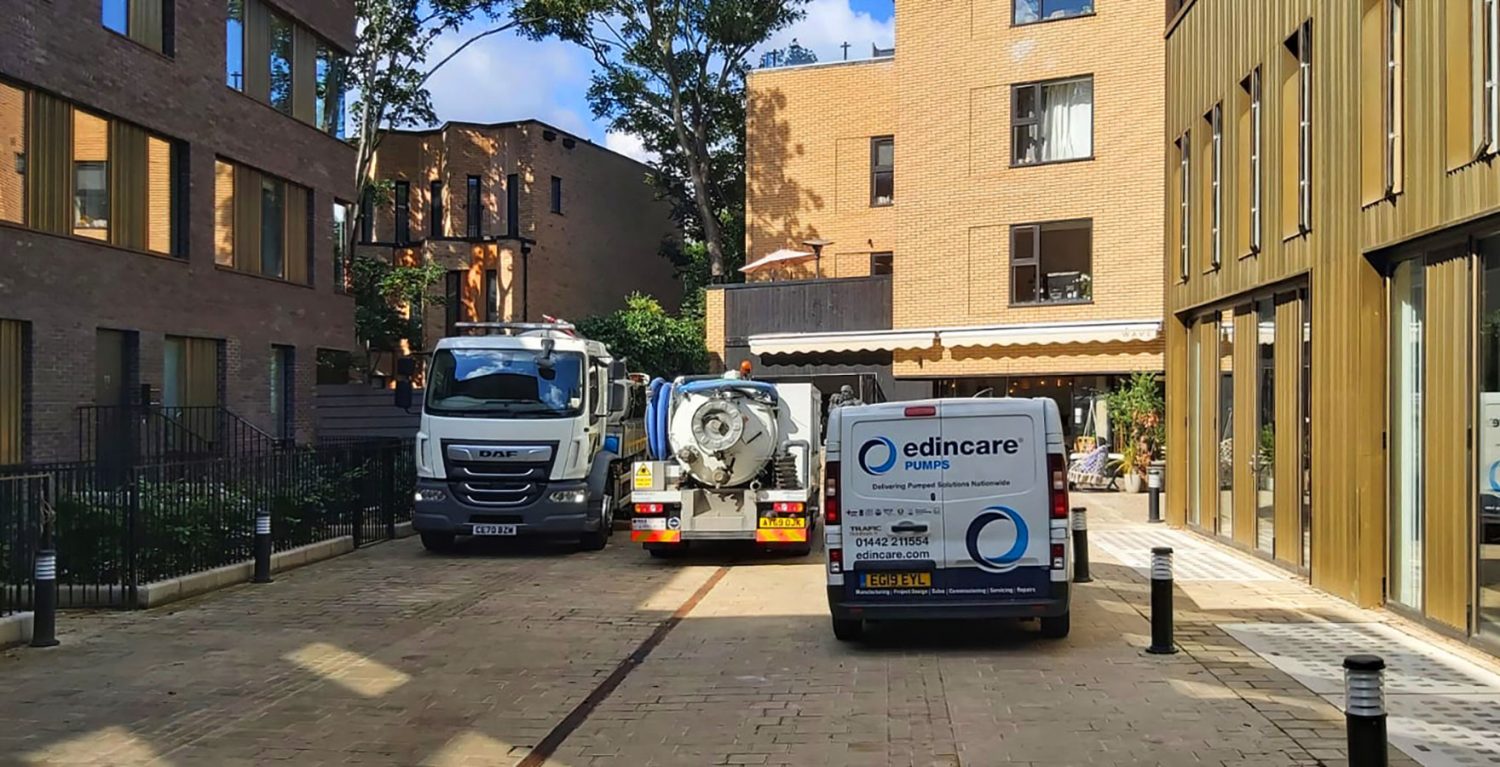Client
Third party service provider
Sector
Residential
Project Type
Site survey
Products Used
Jetting, Tankering, Drainage CCTV, Pump Engineers
Onsite Duration
1 day
Location
North East London
INTRODUCTIONThe site is a gated residential development in North East London, which was completed in spring 2020. It comprises two residential blocks totalling 58 apartments and a further block which combines residential units and a church community hub. At the heart of the development is a paved square with café. We had been recommended to service the site’s complex drainage network, including its pumping stations, in partnership with a third-party service provider. Limited information about the drainage network was provided prior to our first attendance. Before our first visit we were told there were six pumping stations on site – we found nine on the first visit. Subsequently, we found more to bring the total to 12. There are also two storm water attenuation chambers on the site, formed from soakaway crates. The first is under the paved square between the larger residential block and the community hub. The second is in front of the smaller of the two residential blocks. These chambers are linked to the site’s surface water drainage network. We had already serviced the site twice and had made several recommendations for remedial work to the pumping stations, due to poor design and installation. In July 2021 residents reported foul odours across the development. It was discovered that both storm water attenuation chambers were contaminated with foul waste. We were consulted to find the source of this contamination and conduct a full survey of the drainage network. THE PROBLEMOur pump and drainage engineers attended site in July with an 18-tonne combi-tanker, 7.5-tonne combi-tanker and two pump service vehicles. They were accompanied by representatives of the clean water service provider, the property developer, and the construction company. The primary purpose of the visit was to discover the cause of the foul odours. The secondary purpose was to fully assess the foul and surface water drainage networks, including the pumping stations. OUR FINDINGSWe discovered two sources of foul contamination of the surface water network. The first was due to a split in the discharge of the foul water pumping station of one of the blocks at, or beyond, the tank connector. Foul waste was seeping under the slab into the nearby surface water pumping station. More seriously, the foul discharge of the same block was incorrectly connected to the surface water drain. We proved this by running the pumps, dye testing and CCTV. Also due to a partial blockage, foul waste was moving up the network and into the first attenuation chamber. Many other problems with the pumping stations and drainage networks were discovered, and the issues our engineers had encountered on previous service visits were confirmed. These included:
RESOLUTIONFollowing the investigation, we provided a comprehensive report which included recommendations for remedial work to correct these issues. 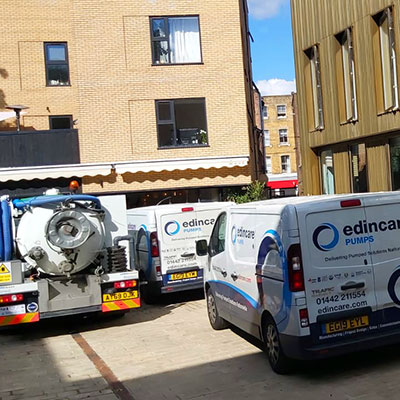
We visited with 2 tankers and 2 pump service vans.
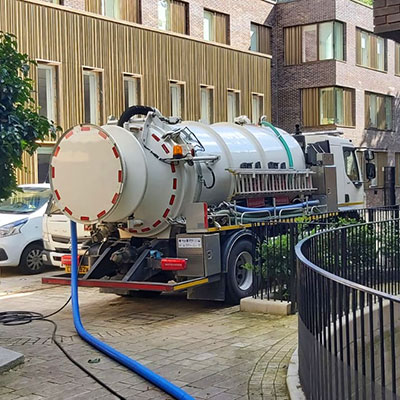
The 18-tonne combi-tanker
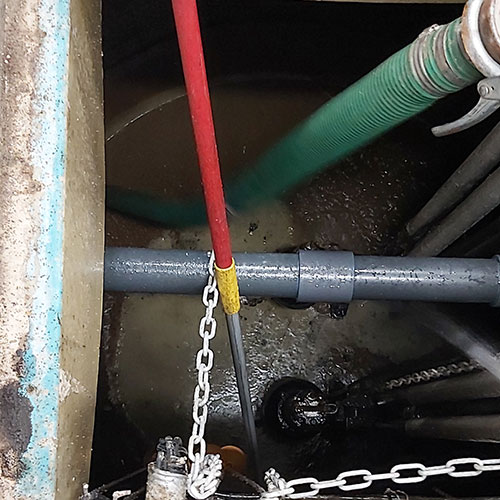
Chambers were tankered and cleaned
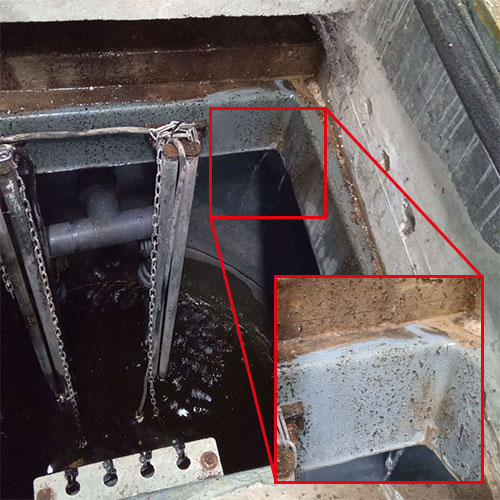
Foul waste seeping into a surface water chamber
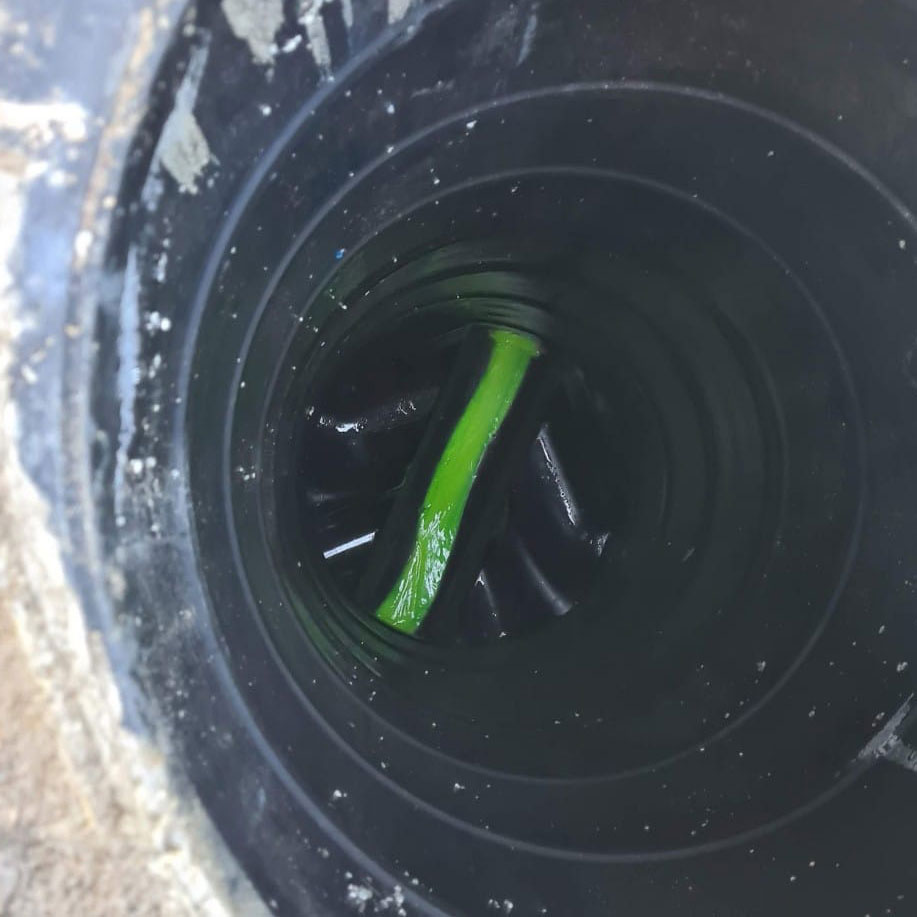
Dye testing
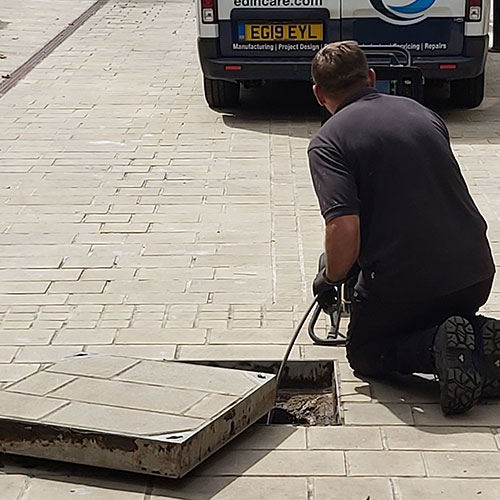
Drainage CCTV
|
|

